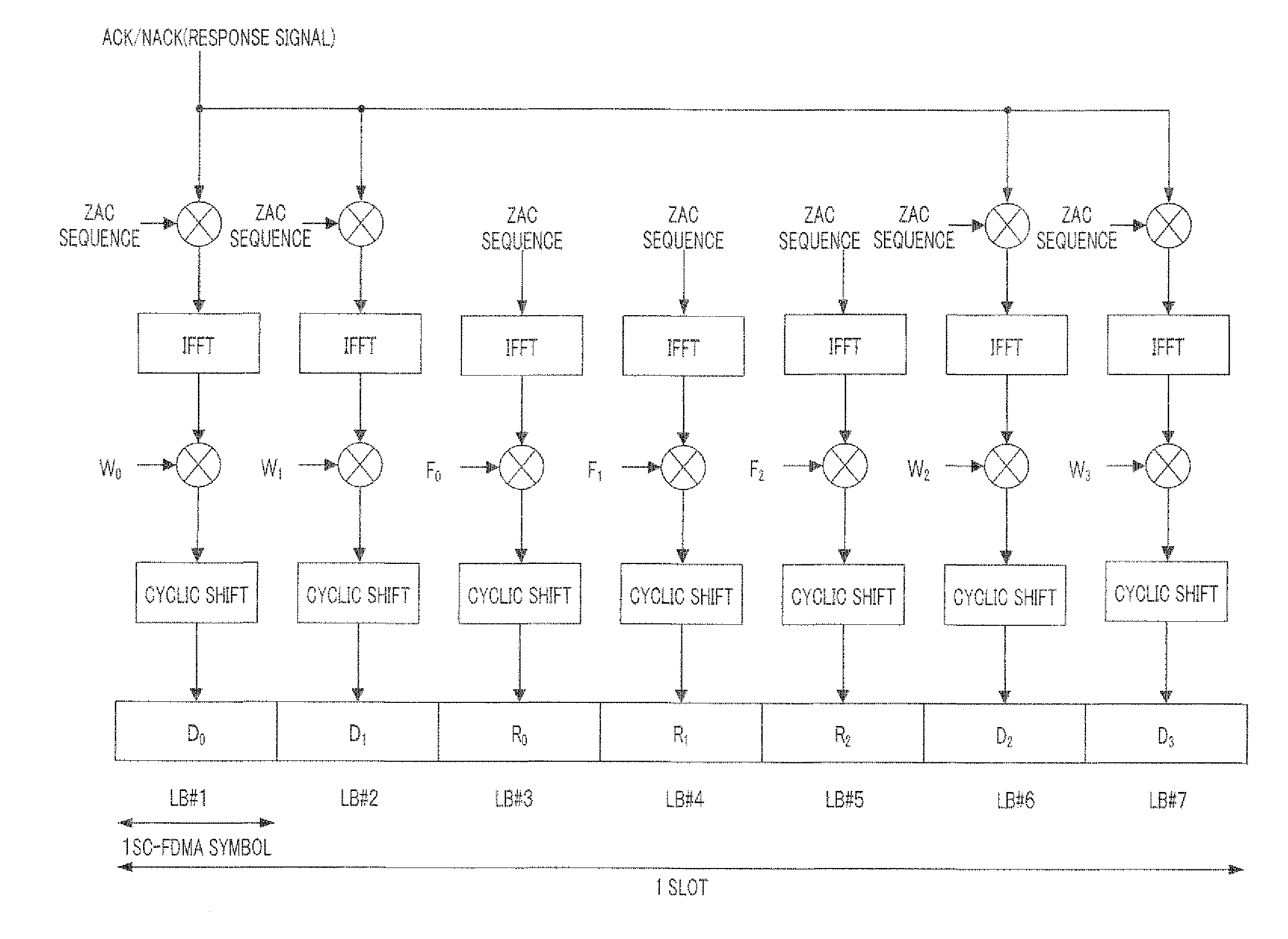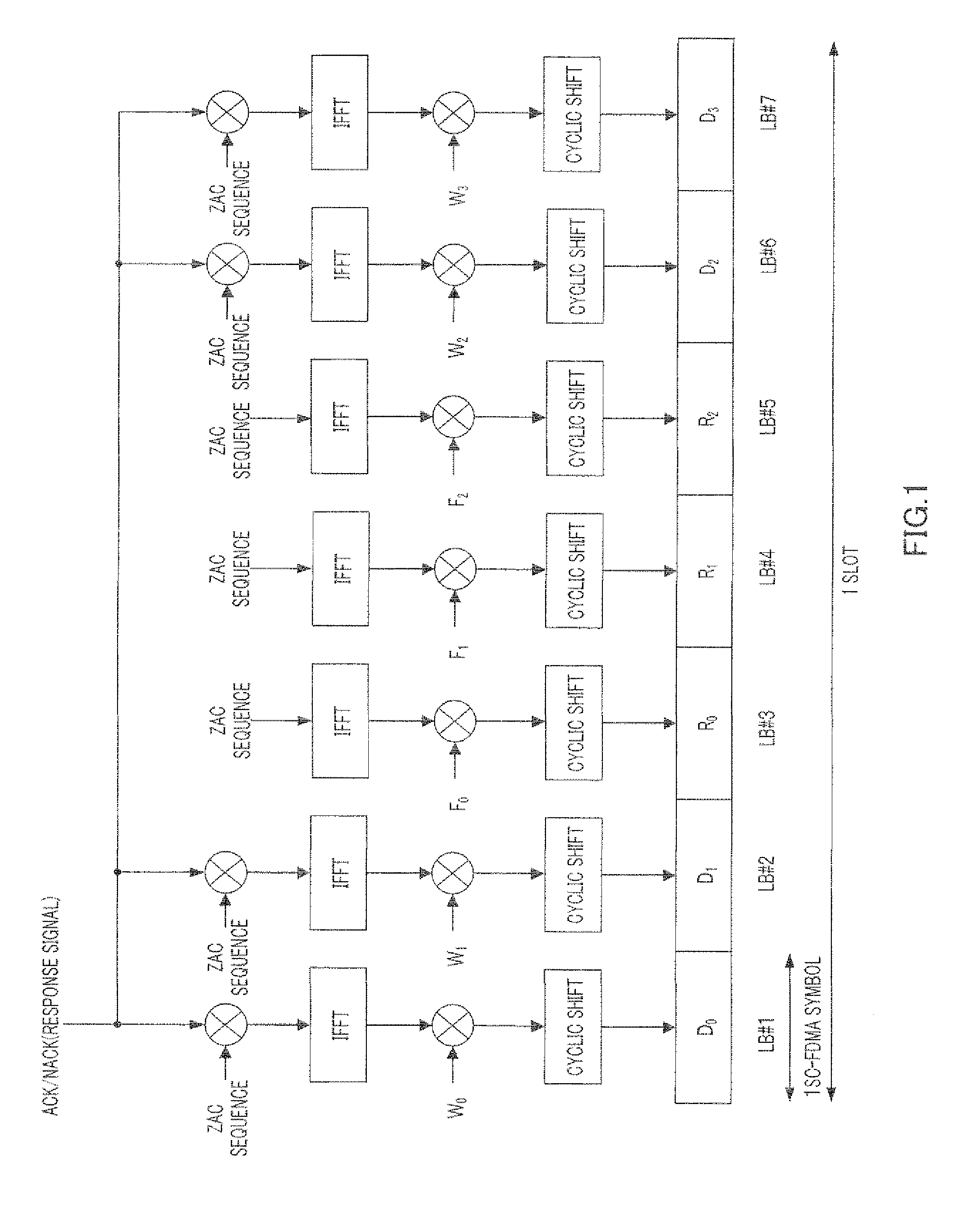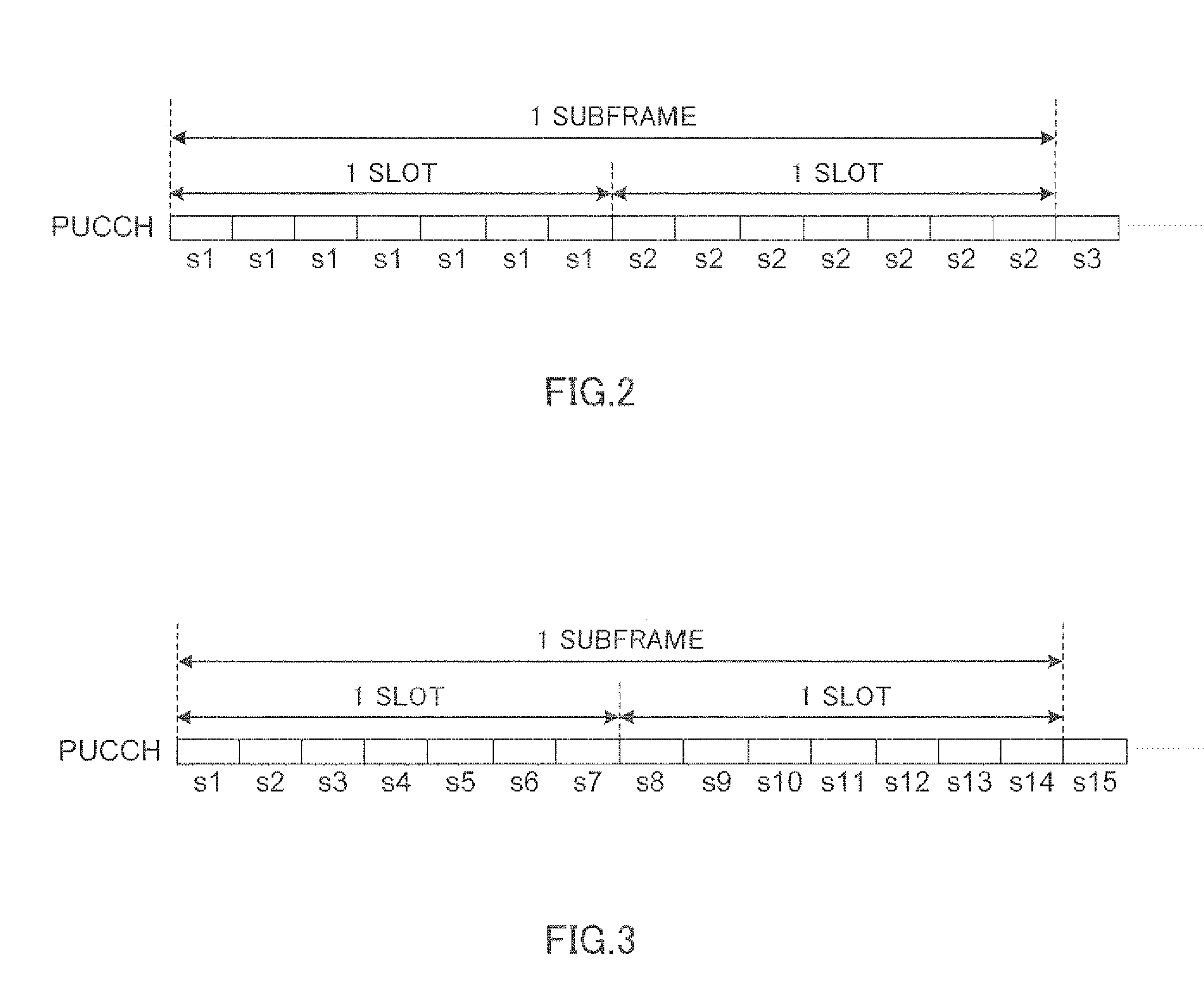Radio communication device and sequence control method
a radio communication device and sequence control technology, applied in the direction of multiplex communication, orthogonal multiplex, digital transmission, etc., can solve the problems of demodulation performance degradation of response signals, and achieve the effect of reducing the influence of inter-cell interference and reducing the amount of reception processing (amount of computation)
- Summary
- Abstract
- Description
- Claims
- Application Information
AI Technical Summary
Benefits of technology
Problems solved by technology
Method used
Image
Examples
Embodiment Construction
[0036]Now, embodiments of the present invention will be described in detail with reference to the accompanying drawings.
[0037]FIG. 6 shows a configuration of mobile station 100 according to the present embodiment, and FIG. 7 shows a configuration of base station 200 according to the present embodiment.
[0038]Now, a case will be described where ZAC sequences are used for primary spreading and Walsh sequences or DFT (Discrete Fourier Transform) sequences are used for secondary spreading. However, sequences other than ZAC sequences, which can be separated from each other by different amounts of cyclic shift may be used for primary spreading. For example, GCL (Generalized Chirp like) sequences, CAZAC (Constant Amplitude Zero Auto Correlation) sequences, ZC (Zadoff-Chu) sequences, or PN sequences such as M sequences and orthogonal Gold code sequences and so forth may be used for primary spreading. Meanwhile, for secondary spreading, any sequences may be used as secondary spreading code se...
PUM
 Login to View More
Login to View More Abstract
Description
Claims
Application Information
 Login to View More
Login to View More - R&D
- Intellectual Property
- Life Sciences
- Materials
- Tech Scout
- Unparalleled Data Quality
- Higher Quality Content
- 60% Fewer Hallucinations
Browse by: Latest US Patents, China's latest patents, Technical Efficacy Thesaurus, Application Domain, Technology Topic, Popular Technical Reports.
© 2025 PatSnap. All rights reserved.Legal|Privacy policy|Modern Slavery Act Transparency Statement|Sitemap|About US| Contact US: help@patsnap.com



